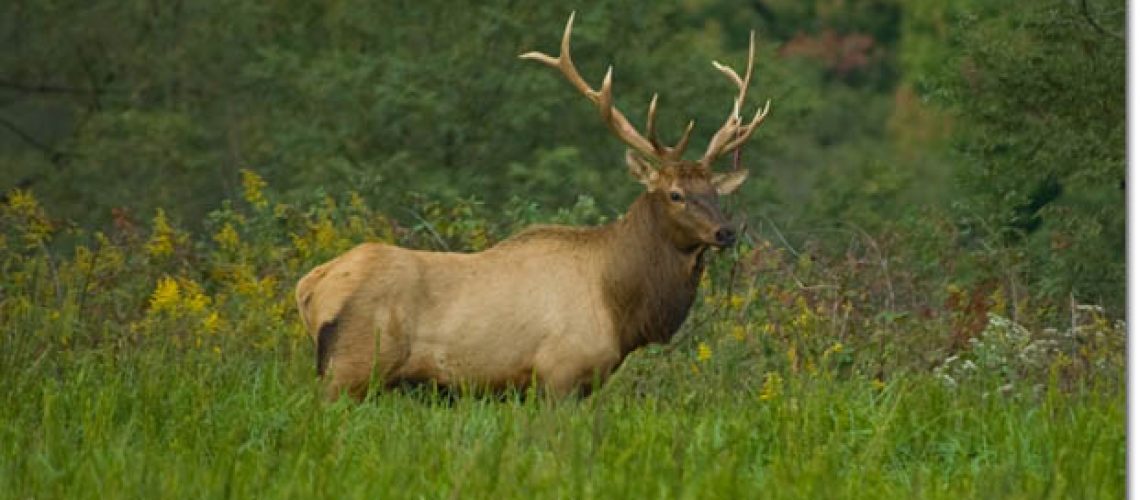Kentucky’s elk zone provides many opportunities to harvest an elk. However, hunting elk in Kentucky is a challenging opportunity that virtually any hunter can tackle. The eastern elk which was native to this state is one of six (6) subspecies of elk that inhabited the northern and eastern U.S., and southern Canada. Kentucky has the largest elk herd of any state east of the Rocky Mountains and offers firearms and crossbow and archery quota hunts for elk hunting each year for the residents and non-residents. Elk herd is now self-sustaining and estimated at around 11,000 approximately animals by far the largest elk herd east of the Mississippi River. And this state has, in turn, supplied a few elk as seed stock for other state restoration programs.
Elk Hunting Season in Kentucky
The Kentucky Fish and Wildlife Commission (KFWC) recommended elk hunting dates for the 2019 – 2020 seasons. It proposed issuing quota hunt permits are 594 for the 2019 – 2020 elk seasons which include 175 for archery, crossbow permits, under which a hunter could harvest either a cow or bull elk. The commission also proposed firearm bull permits 150 and 244 firearm cow permits and 25 youth permits. Here are the following segments of elk hunting.
- Sep. 14 to 27 Sep. The 1st segment of archery and crossbow elk seasons.
- Dec. 5 to 13 Dec. The 2nd segment archery and crossbow would be for hunters with this permit could take a bull or cow elk.
- Nov. 30 to 04 Dec. The 1st segment of firearms season for cow elk
- Dec. 28 to 01 Jan. The 2nd segment of firearms season for cow elk
Elk License in Kentucky
Residents and nonresidents both are eligible to apply for these quota hunts. Applications for these hunts go on sale on 1st January. At least 90 % of elk permits are drawn for residents. Up to 10 % go to nonresidents. Hunters should buy their elk quota hunt applications before midnight Eastern time on 30th April.
- Youth Elk hunting Permit (if drawn) for residents $30 and nonresidents $200
- Elk hunting out of zone permit for residents $30 and nonresidents $400.
Elk quota hunt applications can be purchased via Kentucky Fish and Wildlife’s website at www.fw.ky.gov or at any vendor that sells Kentucky Fish and Wildlife licenses. Contact the department toll-free at 1-800-858-1549, weekdays, 8 a.m. – 4:30 p.m. (Eastern time) if you need assistance.
Best Places to Elk Hunt in Kentucky
The elk restoration zone covers 16 counties in the southeast region of the state (approximately 4.1 million acres). This state has the highest elk population of any state east of the Mississippi River. Here are the following more places to hunt elk in Kentucky,
- Lost Mountain Outfitters, this place is located on the fringe of the majestic Appalachian Mountains in eastern Kentucky, and;
- Smack dab, This place is located in the heart of the elk restoration zone, which covers 16 counties in the southeast region of the state (approximately 4.1 million acres).
Hunting Gear List in Kentucky
Here is the gear list below, which are necessary to carry with you once you are ready to go for hunting in Kentucky.
- Hunting License, Driver’s License or other Id’s
- Kentucky Guide if Non-Resident
- Camera and Smartphone
- Shelter
- Belt, lightweight pair of gloves
- Brimmed Hat
- Waterproof rain jacket
- Waterproof pants
- Underwear
- Lightweight vest
- Shirts long & short
- Hunting Boots
- Socks
- Lightweight Backpack Rain Cover
- Small Flashlight
- Rangefinder
- Quality Binoculars
- Trekking poles
- Bow or Rifle with Scope
- Ammo and Ammo Case
- Hunting Knife with Sharpener
- Toilet Paper and Dry Towel
- Black Diamond Strom Headlamp
- Sleeping Bag
- Cooking Kit
- Water Cooler
Kentucky Elk Hunting Firearms
If you would like to know about legal firearms’ in Kentucky for elk hunting than check below:
- A muzzleloading rifle of .50 caliber or larger when hunting elk.
- Also, Muzzleloading firearms equipped with open sights or telescopic sights (scopes).
- For Muzzleloading shotguns no larger than 10-gauge, shooting round balls, conical bullets or saboted bullets.
[do_widget id=elementor-library-2]

